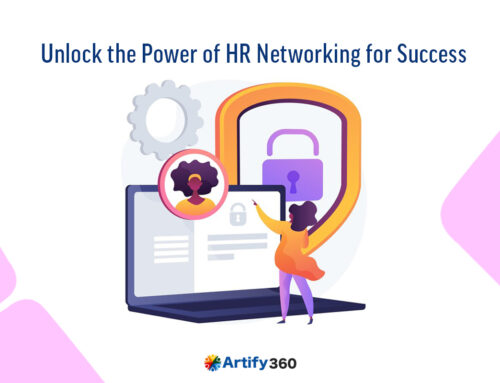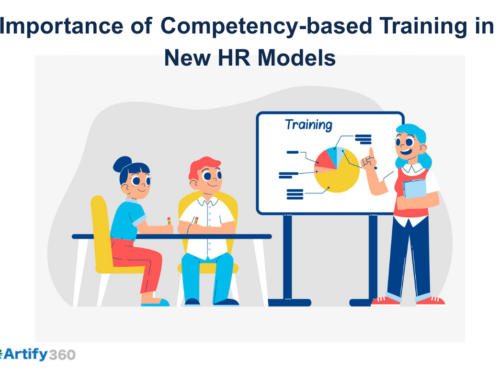A solid onboarding process creates a lasting impression in the mind of new hires of the company.
Onboarding starts with the process of new hires submitting their documents to HR professionals.
What is Employee Onboarding?
Hey did you ever feel that you were comfortable on the first day, week or three months of your job. That unseen process is employee onboarding.
It is the process of helping new hires get adjusted to the work environment and tasks of the new job in a smooth manner.
The new employee must feel the smooth paperwork, training, and activities to transition into an irreplaceable employee.
They need an employee onboarding system to fasten up the process.
Employee Onboarding vs. Orientation
Onboarding and orientation sound the same.
But they are distinct in their forms:
Employee Onboarding vs. Orientation
Orientation happens in a short period of time, of new employees are given an introduction of company values and processes.
What is New Employee Onboarding?
Onboarding defines the new hires of the roles and responsibilities to be done by the employee to the company.
It is a process in which employees can put the orientation process in practice.
Why is Solid Employee Onboarding Important?
From an organizational perspective, employee onboarding brings employees to the best efficiency.
From an employee’s perspective, employee onboarding means minimal paperwork while starting the role.
Hence these 3 reasons why maintaining employee onboarding system is worthwhile:
1.Better Retention
The ill managed employee onboarding process can make employees misinterpret that company itself is mismanaged. So employees can sway away from the company.
2. Higher Employee Engagement
Employee engagement is the emotional connection between the employee and the company. Confidence driven focus can be achieved by a good employee onboarding system.
3. Superb Productivity
Employees need time to settle and reach their best and concentrate with the right frame of mind.
An organized onboarding process fasten this process by causing:
Role clarity imparts the right idea to the employee of what company expects from him/her.
Stronger relationships improves teamwork and loyalty
Automated vs. Manual Onboarding Process
Manual onboarding process involves personally giving attention to new hires to make them feel closer to the company.
But manual onboarding process is counter-productive as employing an automated employee automated system is more efficient and result-oriented.
Manual Onboarding has disadvantages:
HR managers may involve in complicated tasks instead of solving more high-priority issues
Paperwork causes lagging.
HR departments can’t measure the onboarding process manually.
Benefits of Employee Onboarding System
Let’s know why employee onboarding system can ease and quicken onboarding.
Focus on Quality Experience
A manual onboarding process get made like this:
Your HR team maintains paperwork, double checks if at all documents are submitted by new hires.
Manual onboarding makes HR personnel handle high-level tasks such as how new hires are adjusting to their given roles.
By automating the employee onboarding system, HR can focus more on improving the experience of new employees than just hastily doing paperwork.
Centralize the process
Onboarding process broadly involves reading, maintaining and interpreting emails, Excel spreadsheets, and paperwork to fine tune and reduce redundancy and mistakes.
Employee onboarding system manifests itself as the all in one platform. It digitizes the documents and transitions them to mobile, so that HR can get the information in a few seconds.
Track Progress
The HR team employs an onboarding checklist to know where new hires are with their job tasks and what more to be done for better results. Manual Onboarding process is hard and susceptible to errors.
Best Methods for Onboarding New Employees
Here are top HR practices within the organization that have brought good results.
1. Go Paperless
Every employee has documents and it can’t be stored in iron shelves in plenty. The solution to this is going paperless and it has many benefits.
Quicker onboarding
Full proof progress tracking
Lower number of human errors
Cost savings
2. Invest in Training
For long term results, the company helps new hires to get trained in the subject or tasks that industry requires at present , and it is a definite confidence booster for the employees.
3. Choose the Right Employee Onboarding Software
The employee onboarding system has a sudden impact on onboarding process. Here are the insights to choose the right employee onboarding system:
Think About the Road Ahead..
Why does the employee onboarding system improve the wholesome communication strategy?
Aim for Ease of Use
One of the biggest issues companies face when introducing new software is low adoption rates. Often, the biggest barrier to full-scale adoption happens when software isn’t intuitive and easy to use.
The starting trouble for using new software is the barrier to scale. If the chosen employee onboarding system is simple, then employers use it for the long run.
Look for All-in-One Solutions
Experts say that all-in-one employee onboarding system should have all 5 elements of the onboarding process:
- Preparation
- Orientation
- Integration
- Engagement
- Follow-up
Mainly, you choose the system that lets you:
Introduce employees to company rules and regulations during orientation
- Integrate new employees into their new workplace
- Engage employees with clear communication
· Follow-up and receive feedback






